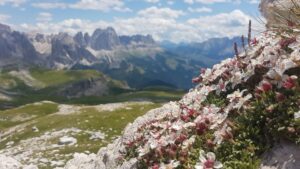Abstract/Description
Satellite observations indicate that glaciers in the Olivares Basin (33°S) of the Central Andes are changing rapidly, with terminus recession of 0.5 – 2.5 km documented between 1973 and the present day. To understand recent changes in the context of longer-term glacier behaviour during the Holocene, we constrained past changes in glacier extent and dynamics using high-resolution geomorphological mapping and 36-Cl whole rock cosmogenic nuclide exposure age dating of ice-marginal moraines. These findings are collated into a reconstruction of the spatio-temporal evolution of the Olivares glaciers, and compared against regional palaeoclimate records.
Geomorphological mapping across the Olivares Basin has identified thirty-three distinct ice-marginal extents, six of which are located in the Salto del Olivares. The Salto del Olivares (2,750 – 2,900 m a.s.l.) is situated -33.10°S, -70.07°W, and surrounded by high-relief topography including a large topographic step of 600 – 650 m which separates the Salto del Olivares from the Upper Olivares and Juncal Sur glacier basins. From terminal moraines M2 (n=3), M3 (n=4), and M5 (n=1) in the Salto del Olivares, we collected and analysed eight samples. All eight 36-Cl ages give a Gaussian weighted mean age of 9.7 ± 4.84 ka and are interpreted collectively due overlapping exposure age distributions. Our results suggest a period of glacier stability at the start of the Holocene or the end of the late glacial period, followed by 5 – 9 km of terminal retreat until 1973. This coincides with retreat over the topographic step, which appears to have affected glacial dynamics as evidenced by ice-marginal moraines. When compared to regional and southern-hemispheric climate of the early Holocene, these results suggest that the Olivares glaciers responded to climate change later than similar sites in Patagonia and Northern Chile. This delayed response, coupled with contrasting spatial extents of retreat through time, indicates that local topographic factors, particularly a large topographic step, have played a significant role in modulating the timing and spatial distribution of moraine exposure across the Olivares Basin, competing against the influence of climate.


